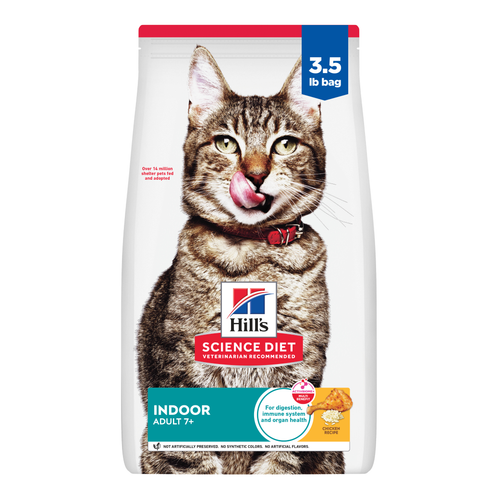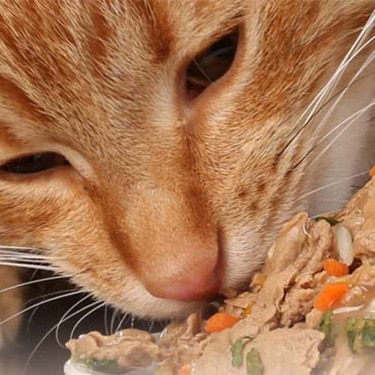
-
Find the right food for your petTake this quiz to see which food may be the best for your furry friend.Find the right food for your petTake this quiz to see which food may be the best for your furry friend.Featured products
 Adult Chicken & Barley Recipe Dog Food
Adult Chicken & Barley Recipe Dog FoodSupports lean muscle and beautiful coat for adult dogs
Shop Now Adult Large Breed Chicken & Barley Recipe Dog Food
Adult Large Breed Chicken & Barley Recipe Dog FoodSupports healthy joints, lean muscle, and beautiful coat for large breed dogs
Shop Now Hill's Science Diet Adult Chicken & Beef Entrée Dog Food
Hill's Science Diet Adult Chicken & Beef Entrée Dog FoodChicken & Beef Entrée in a delicious loaf with complete & balanced nutrition to help keep adult dogs active and healthy
Shop NowFeatured products Adult Turkey & Liver Entrée Cat Food
Adult Turkey & Liver Entrée Cat FoodPrecisely balanced nutrition with the delicious taste of minced turkey & liver to help fuel the energy needs of cats during the prime of their life
Shop Now Senior Vitality Adult 7+ Tuna & Vegetables Stew
Senior Vitality Adult 7+ Tuna & Vegetables StewImproves Everyday Ability to Get Up & Go
Shop Now Adult 7+ Indoor Chicken Recipe Cat Food
Adult 7+ Indoor Chicken Recipe Cat FoodSupports energy level and beautiful fur in mature indoor cats
Shop Now -
Dog
- Dog Tips & Articles
-
Health Category
- Weight
- Food & Environmental Sensitivities
- Urinary
- Digestive
- Joint
- Kidney
-
Life Stage
- Puppy Nutrition
- Adult Nutrition
- Senior Nutrition
Cat- Cat Tips & Articles
-
Health Category
- Weight
- Skin & Food Sensitivities
- Urinary
- Digestive
- Kidney
-
Life Stage
- Kitten Nutrition
- Adult Nutrition
Featured articles What Is Littermate Syndrome? Pet Adoption Guide
What Is Littermate Syndrome? Pet Adoption GuideLearn more about littermate syndrome in dogs and cats and how to successfully navigate adoption and early socialization processes.
Read More The Science Behind Our Love for Pets
The Science Behind Our Love for PetsLearn the scientific reasons why we have such strong connections with our pets, and what science says about the love between humans and our furry friends.
Read More How to Properly Mix Wet & Dry Pet Foods
How to Properly Mix Wet & Dry Pet FoodsAn Orange cat eating from a bowl filled with mixed food
Read More -


One of the greatest parts of pet ownership is being greeted by your furry companion the minute you walk in the door. A cat greeting is not the same as a dog greeting, and the way your cat greets people can tell a lot about how much she trusts them. Once you know the secrets behind the various greetings cats give, you can have a deeper understanding of how your cat feels about you and other people.
The Purrrfect Greeting
When a stranger comes into your home it's very likely your cat keeps her distance. You may even notice your cat greeting each person in your family differently. Cats are very independent animals and when they do make the effort to greet someone, it is because they trust that person and consider them part of their world. Cats have scent glands on their head and around their ears, and they often rub their heads against people and inanimate objects that they value. They want to rub their scent and get to know your scent, too. When a cat is first testing out whether she should trust someone, she may rub against that person's legs. Sometimes when cats start this rubbing process, strangers think the cat wants to be pet. However, if a person reaches down to pet them right away, chances are the cat will take off and hide. So, if you are lucky enough to have a cat rub against you, enjoy it for a few moments before trying to pet her.

The Head Holds a Hidden Message
Whether you call it head butting, head bumping or head bunting, when a cat pushes her head against her human, she's showing that they feel an extremely close bond with that human. The head bump is intimate and is saved for a cat's closest pet friends and most trusted humans. Head butting is a little different from just rubbing their head around something. It is a firm push of the head into their human or pet pal. When a cat presses her head into the head of another animal or human, that is the ultimate sign of trust and love.
The Upturned Belly
If your cat doesn't rub against your leg or never head bumps you, that doesn't mean she doesn't like you. Some cats like to lie around and, rather than exert energy to come see you, they will instead roll over and expose their belly. This doesn't mean they want you to come over and rub their belly. Instead, they're showing that they feel safe, and the exposed belly shows they're willing to leave themselves vulnerable. If your cat does this as a way to greet you, talk softly to her, but don't touch her right away. She may move and start doing some rubbing or she may blink at you.


Tasty Tips
The Secret of the Slow Blink
When cats encounter strange humans or other cats they don't know, they usually greet them with an unblinking stare. Slow blinks can be a sign of contentment and affection. You can slowly blink back at your cat and see how long the exchange lasts. This blinking can be a way to bond with your cat without touching her. This is especially important with a new cat or an older cat she may have had some bad experiences before being adopted into your loving home.
Finally, cats communicate with their tails, as well. Many cats use a question mark shaped tail to greet someone they like or to signal they want to play. A tail in the full upright position also indicates familiarity, trust, and affection.
Whether it is tail signals, slow blinks, head bumps, or just leg rubbing, cats show their affection in many ways and greet the people they trust and love with these body language quirks. Understanding these types of greetings can help you better interact with her and strengthen your bond over time.


Chrissie Klinger is an educator, writer and mother of two children, three dogs and three cats. Her dog Jake loves sitting on her lap every chance he gets! She enjoys living an active and eco-friendly lifestyle in rural Pennsylvania.
Related products

Delectable chunks with tender chicken smothered in a rich gravy

Precisely balanced nutrition with the delicious taste of minced turkey & liver to help fuel the energy needs of cats during the prime of their life

Supports energy level and beautiful fur in mature indoor cats

Improves Everyday Ability to Get Up & Go
Related articles

Discover how to train your cat, starting with very basic first steps that both reward good behavior and discourage the bad.

When you adopt a cat, you don't just gain a best friend; you also save her life. Here's why getting a cat from a local animal shelter makes so much sense.

Discover which cat toys games your feline friend might like, and how they are great sources of exercise. Explore our library of articles to learn more.

Learn how to litter train a kitten with this guide to potty training, including when to start litter training kittens and troubleshooting tips.

Put your cat on a diet without them knowing
Our low calorie formula helps you control your cat's weight. It's packed with high-quality protein for building lean muscles, and made with purposeful ingredients for a flavorful, nutritious meal. Clinically proven antioxidants, Vitamin C+E, help promote a healthy immune system.
Put your cat on a diet without them knowing
Our low calorie formula helps you control your cat's weight. It's packed with high-quality protein for building lean muscles, and made with purposeful ingredients for a flavorful, nutritious meal. Clinically proven antioxidants, Vitamin C+E, help promote a healthy immune system.

